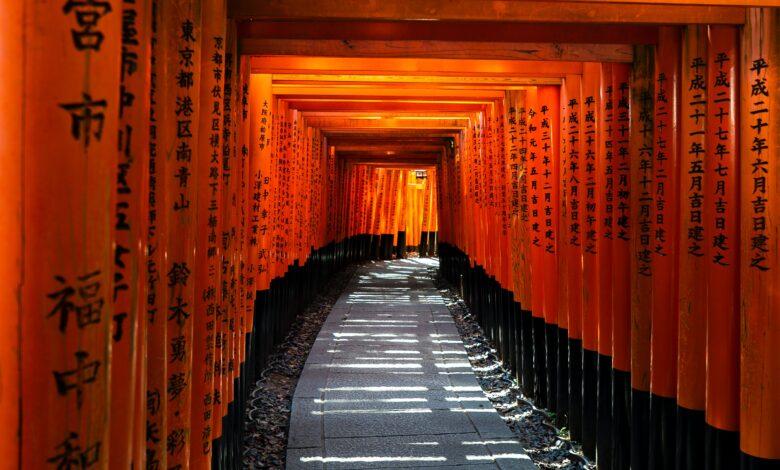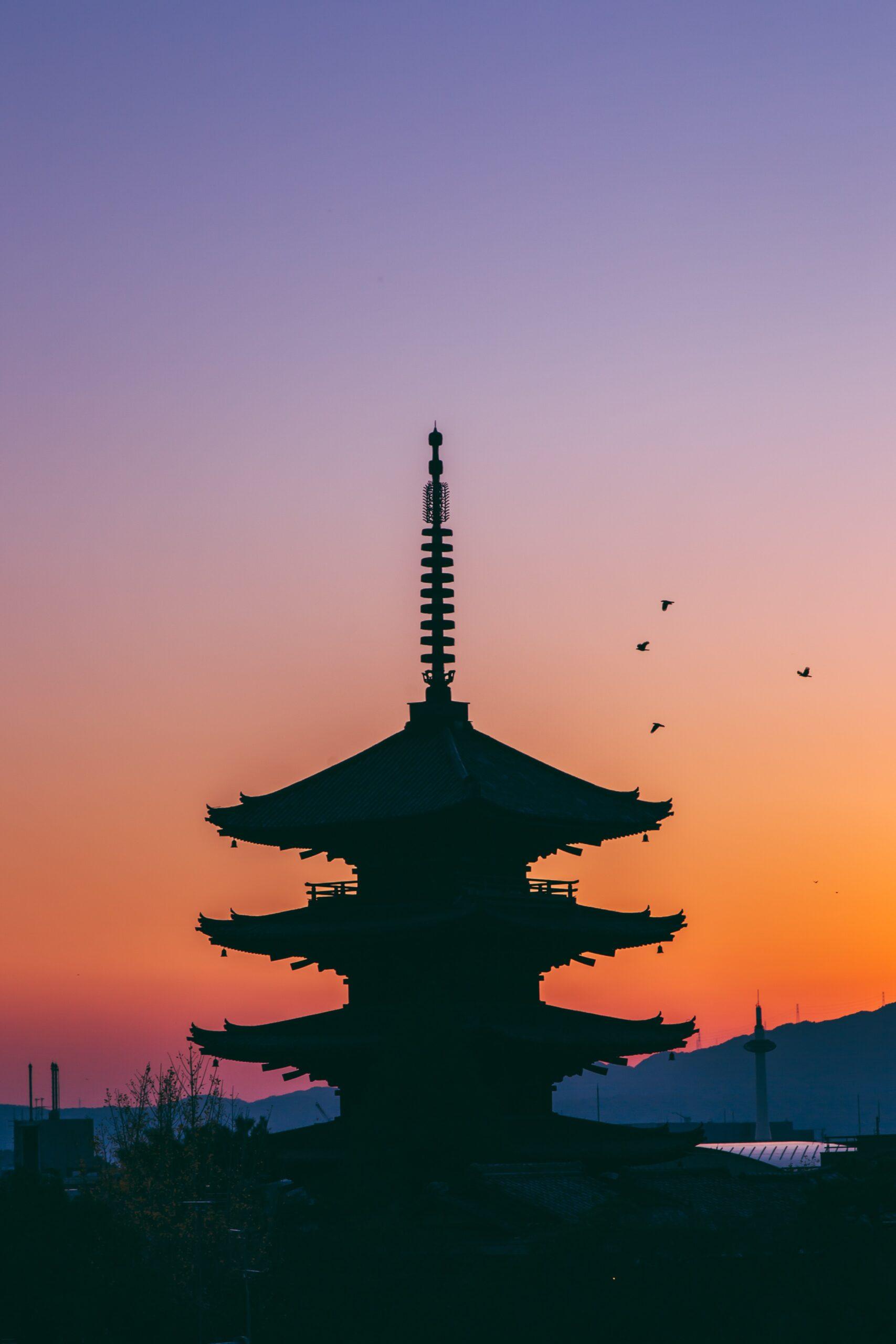A Day in the Life of a Geisha: Gion District, Kyoto 🏮🎎
Delve into the Timeless Traditions and Elegance of Gion's Geishas

Introduction
Step into the enigmatic world of the Geisha, where tradition, artistry, and grace intertwine in the historic Gion District of Kyoto. In this exploration, we invite you to spend a day alongside these cultural icons, gaining insight into their routines, traditions, and the mesmerizing performances that define their captivating world. Join us on a journey through the veiled streets of Gion as we uncover the secrets of a day in the life of a Geisha.
Morning Rituals and Preparations of a Geisha
The life of a Geisha is steeped in tradition and discipline, beginning with their morning rituals and meticulous preparations. Before the day unfolds, a Geisha devotes considerable time to her appearance. This process involves adorning the iconic white makeup, meticulously applying layers of foundation and distinctive red lipstick. The intricate hairstyling, typically featuring ornate kanzashi hair ornaments, is an art form in itself, requiring skill and patience. These meticulous preparations, often starting early in the morning, set the stage for the grace and elegance expected of a Geisha throughout the day.
Rigorous Training and Apprenticeship
Becoming a Geisha involves an arduous apprenticeship known as “maiko,” wherein young women undergo rigorous training in various traditional arts and cultural practices. The maiko phase can span several years, during which apprentices learn the art of conversation, tea ceremonies, traditional dance forms like the graceful “karyukai,” musical instruments such as the shamisen, and the intricacies of wearing kimono.
The training also emphasizes cultivating poise, grace, and the ability to entertain guests with wit and charm. This apprenticeship period is not only a learning experience but a transformation into the refined and cultured world of Geishahood.
Traditional Arts Practiced by Geisha
Geisha are celebrated for their mastery of traditional Japanese arts, which form the core of their performances and interactions. Dance plays a significant role, with Geisha trained in elegant movements and gestures that tell stories through traditional dances like the “Kyo Odori” or the “Miyako Odori.” Additionally, Geisha are adept at playing musical instruments like the shamisen, a three-stringed instrument integral to their performances.
The refined art of tea ceremonies, or “chado,” is another cornerstone of a Geisha’s repertoire. Mastering the intricacies of preparing and serving tea showcases the Geisha’s dedication to perfection in every aspect of their craft.
These traditional arts, honed through years of dedicated training, allow Geisha to captivate audiences and offer a glimpse into Japan’s rich cultural heritage.

Afternoon Activities of a Geisha
A Geisha’s afternoon is a delicate tapestry woven with refined engagements, primarily revolving around cultural ceremonies like tea gatherings and Ozashiki, intimate banquets. These rituals offer a glimpse into Japan’s cultural heritage and the graceful world of the Geisha.
Tea Ceremonies and Ozashiki Banquets
Tea ceremonies hold a revered place in Japanese culture, embodying harmony, respect, and tranquility. Geishas often participate in or host these ceremonies, meticulously performing each gesture, from preparing and serving matcha tea to the precise movements during the ceremony.
Ozashiki banquets are exclusive events where Geishas entertain guests through performances of traditional arts like dance, music, and witty conversation. These banquets unfold in meticulously arranged rooms, filled with elegance, as Geishas engage guests in an atmosphere of sophistication and charm.
Etiquette and Customs Observed
Etiquette is paramount in these interactions. Geishas undergo years of training to master the art of graceful conversation, cultural knowledge, and refined manners. Respect, both for the guests and the traditions, is foundational. They exude grace in every gesture, from pouring tea with precision to engaging in conversation with artful wit.
Interactions and Cultural Significance
Geisha interactions with their clients extend beyond mere entertainment. They serve as cultural ambassadors, preserving traditions through their performances and interactions. The subtlety of their artistry lies not just in entertainment but in fostering an atmosphere where guests experience Japanese heritage firsthand.
These encounters also serve as a bridge between the past and the present, where the cultural significance of rituals and the refinement of interactions are cherished and preserved.
Understanding the afternoon engagements of Geishas offers a glimpse into Japan’s cultural richness and the meticulous dedication these artisans exhibit in upholding centuries-old traditions. It’s a world where every gesture, every word, and every performance is an exquisite brushstroke painting the canvas of Japan’s cultural heritage.
Geisha Performances in Ochaya and Theaters
The enchanting world of Geisha performances in Kyoto’s ochaya (tea houses) or theaters is a captivating display of grace, artistry, and tradition. Geisha, masters of various traditional arts like dance, music, and conversation, mesmerize audiences with their refined skills honed over years of training.
Elegance and Skill in Traditional Geisha Arts
Geisha performances are a fusion of elegance and skill. The meticulous movements in the traditional dances, accompanied by the melodious tunes of shamisen (a traditional stringed instrument), evoke a sense of timeless beauty. Geisha effortlessly weave storytelling into their performances, engaging spectators with their eloquence and wit.
The art of conversation, known as “sado” or “the way of tea,” is also an integral part of Geisha entertainment. Their ability to engage guests in meaningful dialogue while maintaining an aura of poise and sophistication is a testament to their artistry.
Ambiance and Atmosphere of Gion’s Evenings
In the historic Gion district of Kyoto, evenings come alive with the allure of Geisha entertainment. The cobblestone streets adorned with traditional lanterns create an ambiance steeped in tradition. Visitors might catch glimpses of Geisha, adorned in exquisite kimono and delicate makeup, gracefully gliding between ochaya, adding an air of mystique to the atmosphere.
Teahouses and theaters in Gion offer intimate settings for experiencing Geisha performances. The subdued lighting, minimalist decor, and tatami mat floors create an authentic backdrop for guests to immerse themselves in the enchanting world of Geisha arts.
Visiting one of these venues during an evening performance grants a rare opportunity to witness the depth of Geisha culture. From the intricate movements of the dance to the harmonious melodies of traditional instruments, every aspect of the performance reflects the dedication and expertise that define the legacy of Geisha in Japan.
Challenges and Rewards of Being a Geisha
The life of a Geisha is a delicate balance of artistry, dedication, and resilience. The path to mastering traditional arts like dance, music, and the subtle nuances of conversation is arduous. Years of rigorous training, known as “misedashi,” test a Geisha’s patience and determination. The demands of perfecting these skills while maintaining grace under societal scrutiny present immense challenges.
Yet, within these challenges lie profound rewards. The artistry of a Geisha is a mosaic of elegance, poise, and sophistication. Their role extends beyond entertainment; they serve as custodians of cultural heritage, preserving centuries-old traditions through their performances. The privilege of captivating audiences with refined talents and nurturing a deep connection with patrons brings fulfillment amidst the challenges.
Misconceptions and Realities of the Geisha Profession
Misconceptions often shroud the reality of the Geisha profession. Contrary to popular belief, Geishas are not courtesans or prostitutes. They are skilled entertainers trained in traditional arts, revered for their intellect, wit, and cultural knowledge. However, societal misunderstandings perpetuate myths, blurring the lines between the Geisha’s artistic finesse and misconceived notions of their role.
The reality is that Geishas are artisans of culture, embodying the essence of refined hospitality. Their artistry is a bridge between past and present, weaving the threads of tradition into contemporary settings. Understanding the true essence of the Geisha profession dispels misconceptions and unveils the depth of their contributions to Japan’s cultural identity.
Importance of Preserving Cultural Heritage
Preserving the legacy of Geisha culture is imperative in safeguarding Japan’s rich heritage. As modernization and societal shifts challenge traditional customs, the essence of Geisha artistry risks fading. Yet, the significance of their role transcends entertainment; it encapsulates centuries of tradition, offering a glimpse into Japan’s history and ethos.
The preservation of Geisha traditions is a testament to honoring diversity and the beauty of cultural heritage. Embracing and celebrating the artistry, rituals, and symbolism woven into the Geisha world ensures the continuity of a legacy that transcends generations.
By acknowledging the challenges, dispelling misconceptions, and highlighting the cultural significance of Geishas, we contribute to the collective effort of safeguarding this invaluable cultural treasure.
FAQs
Q. What exactly is a geisha?
A. Geishas are skilled performers trained in traditional Japanese arts like dance, music, and conversation, symbolizing Japan’s cultural heritage.
Q. Do geishas still exist in contemporary Japan?
A. Yes, geishas continue to play a cultural role in Japan, entertaining through performances and upholding traditional practices.
Q. Can visitors meet or interact with geishas?
A. There are limited opportunities for interaction. Some tea houses offer experiences to observe performances or engage in conversation.
Q. Are geishas and maikos the same?
A. Maikos are apprentice geishas, identifiable by their distinctive attire and elaborate hairstyles during training.
Q. How can one experience the geisha culture in Gion?
A. Visitors can book tea house experiences, attend public performances, or explore historical landmarks linked to geisha culture.
Q. Are there any misconceptions about geishas?
A. There are several misconceptions; for instance, geishas are not courtesans but artists and entertainers.
Conclusion
As we bid farewell to the intriguing world of the Geisha in Gion, we depart with a deeper appreciation for their dedication, talent, and the richness of Japanese cultural heritage they embody. Their elegance, artistry, and commitment to preserving ancient traditions offer a glimpse into a timeless realm of grace and sophistication. Let us cherish and honor the legacy of the Geisha, recognizing their role as guardians of a cultural legacy that continues to enchant and captivate admirers from around the world.
UP NEXT
https://touristeyes.com/traveling-to-italy/





Facebook Comments